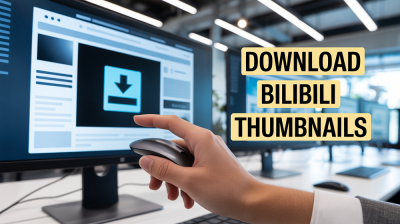Have you ever logged into LinkedIn only to discover that your account is restricted? You're not alone! Many users face this frustrating hurdle. LinkedIn account restrictions can happen for various reasons, and understanding them is crucial for your networking success. In this blog post, we’ll break down the common causes of these restrictions and share practical solutions to get your account back on track. Let’s dive in!
Common Reasons for LinkedIn Account Restrictions
Account restrictions can feel like an unexpected roadblock, but knowing the common reasons can help you avoid them. Here are some of the main factors that might trigger a restriction on your LinkedIn account:
- Spammy Behavior: If LinkedIn detects that you're sending too many connection requests or messages in a short period, they might assume you're spamming. Always personalize your requests and limit how many you send daily.
- Inaccurate Profile Information: Providing false information, such as an unprofessional photo or misleading job titles, can lead to restrictions. It's essential to keep your profile authentic and reflective of your real career journey.
- Using Automation Tools: Tools that automate actions like connections or messaging can violate LinkedIn's policies. Relying on these can lead to immediate restrictions, so it's best to engage with your network organically.
- Receiving Too Many Reports: If other users report your profile for inappropriate content or behavior, LinkedIn may restrict your account. Always adhere to community standards and be respectful in your interactions.
- Inactivity: An account that remains dormant for an extended period may also face restrictions. Regularly logging in and engaging with your network is vital to keeping your account active.
By understanding these common reasons, you can take proactive steps to maintain a healthy LinkedIn profile and avoid unnecessary restrictions. So, keep your interactions genuine, update your information, and stay engaged with your professional community!
Also Read This: Can You Unsend a LinkedIn Message? What You Should Know
3. How to Identify if Your LinkedIn Account is Restricted
So, you've been using LinkedIn to network and showcase your professional skills, but suddenly, you notice something's off. Maybe you can't connect with anyone or send messages. How can you tell if your account has been restricted? Here are some clear signs:
- Inability to Connect: If you find yourself unable to send connection requests, that's a red flag. LinkedIn limits the number of requests you can send, but a complete stop can indicate a restriction.
- Message Restrictions: Can't send messages to your connections? This feature is usually available to all users, so a sudden inability suggests something's wrong.
- Profile Visibility Changes: If your profile suddenly becomes less visible or your posts aren’t reaching your connections, it might be due to account restrictions.
- Error Messages: Pay attention to any error messages you receive when trying to send invites or messages. Common messages like “you’re not allowed to perform this action” are a sure sign of restrictions.
- Notification from LinkedIn: Occasionally, LinkedIn will directly notify you about restrictions via email or in-app notifications. Keep an eye on your inbox!
If you’re experiencing any of these issues, it’s crucial to take a closer look at your account. Identifying these signs early can help you take action before things get worse.
Also Read This: Is It Worth Connecting with Recruiters on LinkedIn
4. Steps to Resolve LinkedIn Account Restrictions
Now that you've identified potential restrictions on your LinkedIn account, the next step is resolving those issues. Here’s a straightforward guide to help you navigate this process:
- Review LinkedIn's Policies: Before taking any action, familiarize yourself with LinkedIn's User Agreement and Professional Community Policies. Understanding the rules can help you figure out what might have led to the restrictions.
- Check Your Inbox: Look for emails from LinkedIn regarding your account status. Sometimes, they provide specific reasons for the restrictions and guidance on how to resolve them.
- Appeal the Decision: If you believe your account was restricted by mistake, you can appeal. Go to the Help Center and submit a support ticket explaining your situation. Be polite and provide any necessary details.
- Change Your Behavior: If you received a restriction due to spammy behavior, take a moment to reflect on your activity. Avoid sending too many connection requests in a short time, and engage authentically with your connections.
- Wait Patiently: After you’ve submitted an appeal or made necessary changes, give it some time. LinkedIn usually takes a few days to respond, so be patient as they review your case.
Remember, getting restricted can happen to anyone, but it's essential to learn from the experience. Follow these steps, and soon you'll be back to utilizing LinkedIn to its fullest potential!
Also Read This: How to View Your Own LinkedIn Profile
5. Preventing Future Restrictions on Your LinkedIn Account
It's always a bummer to face restrictions on your LinkedIn account, especially if you're using the platform to network and build your professional brand. However, there are several proactive steps you can take to prevent future restrictions from happening. Let’s explore these strategies!
1. Understand LinkedIn’s Policies
The first step to avoiding restrictions is to familiarize yourself with LinkedIn’s User Agreement and Community Guidelines. By knowing what's acceptable, you can steer clear of actions that might raise red flags. Pay close attention to sections regarding spam, harassment, and unauthorized sharing of content.
2. Use Your Real Identity
LinkedIn is a professional networking site, and using a real name helps maintain its integrity. Avoid using fake names or impersonating others, as this can certainly lead to restrictions. Always ensure your profile is a true reflection of who you are.
3. Be Mindful of Connection Requests
- Avoid sending too many connection requests in a short time frame.
- Only connect with people who you genuinely know or have interacted with.
- Personalize your connection requests to make them more meaningful.
4. Engage Authentically
Instead of posting content solely for the sake of posting, engage with your network authentically. Comment on posts, like relevant articles, and share insights that showcase your expertise. This helps build genuine relationships and decreases the likelihood of being flagged for suspicious activity.
5. Monitor Your Account Activity
Keep an eye on your account for any unusual activity. If you notice anything strange—like sudden connection requests or messages you didn’t send—take action immediately. You can change your password and review your account settings to ensure everything is secure.
6. Report Any Issues Promptly
If you think you might have mistakenly violated LinkedIn's rules, or if you face any issues, reporting them promptly can minimize the risk of further restrictions. Use the LinkedIn Help Center to get assistance when needed.
6. Conclusion: Staying Compliant on LinkedIn
In the fast-paced world of professional networking, staying compliant with LinkedIn’s policies is more crucial than ever. Understanding how to navigate the platform without falling into the traps that lead to account restrictions will enhance your experience and boost your professional visibility.
Remember, LinkedIn is not just a place to showcase your resume; it’s a community where meaningful connections are made. By adhering to best practices, being transparent, and engaging authentically, you can build a strong presence without the fear of account restrictions.
Ultimately, the goal is to leverage LinkedIn effectively while respecting the guidelines that keep the platform safe and professional. With these strategies in your toolkit, you're well on your way to cultivating a thriving LinkedIn profile that stands the test of time. Happy networking!

 admin
admin








